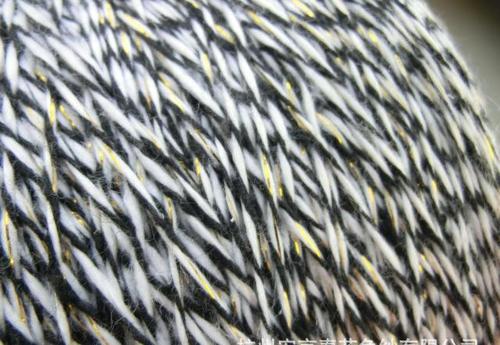What is fancy yarn and what are the differences between fancy yarn and regular yarn?
What is fancy yarn and the difference between fancy yarn and regular yarn
Fancy yarn is composed of several types of yarns (ordinary core yarn, decorative yarn, and fixed yarn), which have different structures, functions, and appearances.

Ordinary yarns include short fiber yarns (yarns spun from short fibers) and long fiber yarns.
Fancy yarn refers to a type of yarn that has a special structure and appearance effect obtained by processing fibers or yarns using special materials, special equipment, or special processes during spinning and yarn production. It is a decorative yarn in yarn products. Due to the unconventional nature of production equipment and the characteristics exhibited by the yarn itself, it is also known as special yarn. Almost all natural fibers and common chemical fibers can be used as materials for producing fancy yarns. Fancy yarns can be made from materials such as silk, pressed silk, spun silk, artificial silk, cotton yarn, hemp yarn, synthetic silk, gold and silver thread, blended yarn, and artificial cotton. Various fibers can be used independently or mixed with each other, highlighting their strengths and avoiding their weaknesses, fully utilizing their inherent characteristics!
Article source: Fancy Thread Manufacturer
-
05-27
The reason why fabrics containing spandex are prone to yellowing
Spandex is a commonly used fiber variety in our daily lives, characterized by good elasticity, low fineness, high elastic modulus (cracking elongation can reach 400-800), and low specific gravity. Spa
-
04-24
Colored non dyed nylon with synthetic fiber raw material
The current conventional fiber coloring mostly uses yarn dyeing method, which has long process, high loss, high cost, and the product has color difference and low color wash fastness. Yarn is prone to
-
03-26
What are the characteristics of non dyed spandex?
Non dyed spandex has also been widely used in recent years. Non dyed spandex fiber can be blended with fibers such as nylon, polyester, acrylic, cotton, wool, etc., which can give fabrics excellent el
-
02-24
The influence of yarn structure on fabrics
The basic characteristics of yarn include its appearance and shape, twisting characteristics, fiber transfer and distribution characteristics in the yarn, as well as the surface fuzz and internal loos
